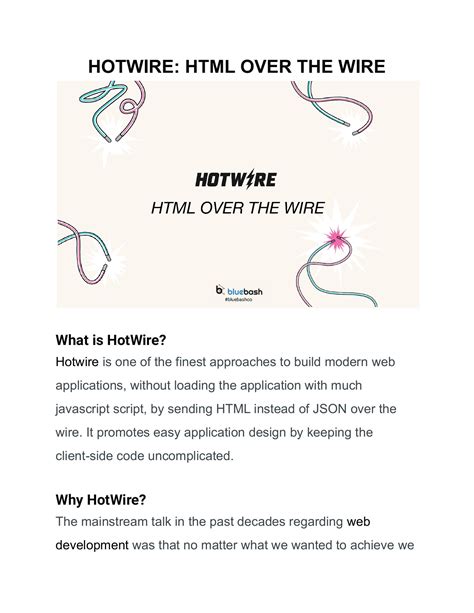Hotwire is generating buzz in the web development community thanks to its interesting approach of sending HTML over the wire to create dynamic web applications. Developed by 37signals, the minds behind Basecamp, it’s part of a broader suite of tools under the Hotwire umbrella, including Turbo, Stimulus, and Strada. Fans of this technology appreciate its straightforward nature, arguing that it simplifies the development process by removing the need for complex JavaScript frameworks and state management systems.
One of the major attractions of Hotwire is that it allows developers to build interactive web applications without having to write much JavaScript. It leverages server-rendered HTML and streams it to the client in real-time via WebSockets, a method likened to Phoenix LiveView. As a result, it’s possible to achieve a high level of interactivity with minimal frontend code. For those who have used Hotwire with Ruby on Rails, the benefits are immediately tangible; this tight integration simplifies the development process even further.
But with every new technology, there’s bound to be some debate. Critics of Hotwire argue that the idea of HTML over the wire is not revolutionary. Indeed, this method hearkens back to the early days of web development when applications relied heavily on server-side rendering. Technologies like AJAX and XMLHttpRequest (XHR) have been around for a long time, and their evolution has led to numerous modern techniques, such as the development of Single Page Applications (SPAs) with frameworks like React or Vue. While Hotwire aims to simplify the process, some developers see it as a step backward, rather than forward.
Another point of contention circles around the performance and maintainability of Hotwire-based applications. Detractors argue that sending HTML updates over WebSockets can introduce latency issues, especially when dealing with a slow network. A recent hot topic in developer circles involved a debate sparked by a video demonstrating performance issues in a Hotwire-powered app. The video suggested that Hotwire could be too reliant on the network, causing significant slowdowns. Advocates counter this by emphasizing the need for proper implementation and network handling.
Comparisons between Hotwire and other technologies like Phoenix LiveView, LiveWire, and htmx have further fueled the discussion. Each of these tools could be seen as tackling similar problems but from different angles. For instance, Phoenix LiveView focuses on server-side rendering coupled with WebSocket updates, similarly to Hotwire. On the other hand, htmx allows for much lower-level control, enabling developers to craft custom solutions according to their needs. The choice between these options often comes down to project requirements and the developer’s familiarity with the underlying technologies.
The Hotwire approach, while receiving mixed reactions, is also viewed favorably for simplifying Progressive Web App (PWA) development. By adhering to the old-school yet proven strategy of server-side rendering and sending HTML fragments, it bypasses the complexity associated with SPAs. This can be especially beneficial for smaller or less interactive applications where the overhead of a full-fledged JavaScript framework like React or Vue might be overkill.
Lastly, it’s crucial to highlight the community’s take on the evolving landscape of web development frameworks. While some argue that Hotwire, along with its counterparts, is an iteration of older concepts, others feel it brings much-needed simplicity and developer focus back into the equation. With documentation being a common pain point across different frameworks, the importance of thorough, easily accessible, and illustrative resources can’t be overstressed. Whether Hotwire will stand the test of time or be another blip in the continuous cycle of web development innovations remains to be seen. Still, one thing is sure: it’s certainly making waves and providing food for thought for developers worldwide.


Leave a Reply